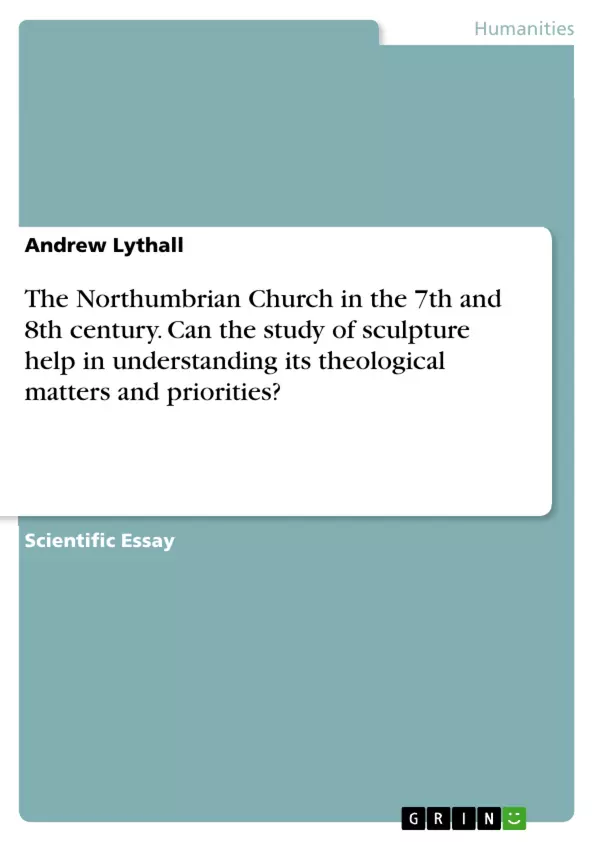This paper examines the topic of 7th and 8th century Northumbrian sculptures and what light their study can shed on the theological understandings and priorities of the Northumbrian Church.
In recent years it has been recognised that Anglo-Saxon sculpture may provide a critical insight into the life and practice of the Northumbrian church. As a result, the latter half of the twentieth century saw a considerable resurgence of interest in Anglo-Saxon sculpture, particularly that in Northumbria.
This has been further reinforced by the fact that Northumbrian sculpture exists in surprising quantity, and some of the earliest and finest examples of Anglo-Saxon stone sculpture are Northumbrian in origin. This paper explores the importance of such sculpture, and analyses contemporary liturgical trends.
Inhaltsverzeichnis (Table of Contents)
- Introduction
- The Importance of Sculpture
- Free-Standing Crosses
- Theological Priorities
- Theological Understanding and Priorities
- The Centrality of the Cross
- The Centrality of the Eucharist
- Christus Victor
- Liturgical Practice
Zielsetzung und Themenschwerpunkte (Objectives and Key Themes)
This study aims to explore the theological and liturgical understanding of the Northumbrian church as reflected in its sculpture, particularly the free-standing crosses. It aims to understand the significance of these sculptures in relation to the intellectual and social context of early medieval Northumbria.
- The centrality of the cross as a symbol of salvation and victory
- The importance of the Eucharist in the life of the church
- The concept of Christus Victor, and the portrayal of Christ as a heroic conqueror
- The influence of Roman liturgical practice on Northumbrian sculpture
- The relationship between sculpture and written sources in the understanding of Northumbrian Christianity
Zusammenfassung der Kapitel (Chapter Summaries)
- Introduction: This chapter provides a brief overview of the importance of Anglo-Saxon sculpture in understanding the life and practice of the Northumbrian church.
- The Importance of Sculpture: This chapter discusses the significance of free-standing crosses as sources for understanding the theological and liturgical priorities of the Northumbrian church. It highlights the unique features of the three most complete crosses: Acca's cross, the Ruthwell cross, and the Bewcastle cross.
- Theological Understanding and Priorities: This chapter explores the theological understanding of the cross, the Eucharist, and Christus Victor as reflected in Northumbrian sculpture. It examines the use of imagery and inscription on the crosses to illustrate these themes.
- Liturgical Practice: This chapter investigates the influence of Roman liturgical practice on Northumbrian sculpture, particularly in the wake of the Synod of Whitby. It explores the evidence of liturgical themes in the imagery and design of the free-standing crosses.
Schlüsselwörter (Keywords)
Anglo-Saxon sculpture, Northumbria, free-standing crosses, theological understanding, liturgical practice, Christus Victor, Eucharist, Synod of Whitby, Roman liturgical influence, Bede, Dream of the Rood, vine-scrolls, Agnus Dei, imagery, inscription.
- Citar trabajo
- Andrew Lythall (Autor), 2010, The Northumbrian Church in the 7th and 8th century. Can the study of sculpture help in understanding its theological matters and priorities?, Múnich, GRIN Verlag, https://www.grin.com/document/319476



